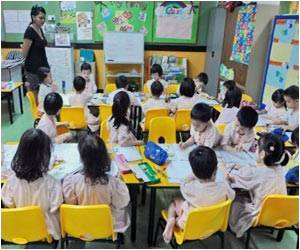
Many of the world's most prestigious institutions have built, or are building, new campuses in some of Asia's thriving cities.
Harrow School is one of England's most famous fee-paying schools with a long and impressive list of "old boys".
British wartime leader Sir Winston Churchill, the poet Lord Byron, India's first prime minister Jawaharlal Nehru, King Hussein of Jordan and even the pop singer James Blunt once wore the school's famous straw boater hat.
Next year Harrow will open a new campus for 1,200 students in Hong Kong, which follows Harrow schools already opened in Bangkok and Beijing, to help satisfy a growing demand for ultra high-end schooling in Asia.
It won't be cheap.
Advertisement
Mark Hensman, the executive headmaster of Harrow International Schools, says the demand for expensive schooling is being driven by parents whose ambitions for their children have risen in line with their incomes.
Advertisement
"The trend in recent years has been for the growth of international schools to be sustained by a rapidly increasing demand from local parents rather than from expatriate parents.
"Governments in these countries are struggling to meet these expectations in their local education system and so international schools are increasingly filling the vacuum."
One of them is Marlborough College, another famous old English fee-paying school, which is building its first overseas campus as part of a massive new education hub in Malaysia.
The EduCity hub in Iskandar, Johor state -- which sits on the southernmost tip of peninsular Malaysia opposite Singapore -- aims to enrol around 16,000 students by completion of the site in 2016.
The Netherlands Maritime Institute of Technology opened in May and Britain's Newcastle University will welcome the first students to its medical school in September. Southampton University is building a campus.
From the US, the Massachusetts Institute of Technology (MIT) is jointly creating Asia's first Institute for Supply-Chain Innovation with a Malaysian partner and Johns Hopkins University is expected to set up a medical school.
A sports complex and international student village with housing are also planned.
Khairil Anwar Ahmad, who heads the company behind the complex, said the aim was to provide talent, stimulate the local economy and put Malaysia on the education map.
EduCity will offer students a cheaper way to get a good foreign degree -- in the case of Newcastle University Medical School at about 65 percent of the cost.
"Asian parents always place a lot of emphasis on education," Ahmad told AFP. "There are more parents who can send their kids abroad but probably not Europe or the US so that this is a more affordable option.
"It's more affordable... but you get the same quality."
The EduCity institutions hoped to attract a 50-50 mix of local and foreign students from mostly China, India, the Middle East and other regional countries.
In Singapore, a sapling of the US's prestigious 'Ivy League' college circuit has been planted with Yale University setting up the city-state's first liberal arts college at the National University of Singapore.
International schooling is a huge global business worth $26 billion in school fees alone. But this figure is expected to double in a decade, says analyst firm ISC Research as the number of schools also doubles.
"International education is now very big business," Nicholas Brummitt, Managing Director of ISC Research, told AFP.
"Two of the most noticeable changes in the market are the increase in the number of local students and the increase in the number of schools run for profit.
"In the year 2000, international schools were still perceived largely as an expatriate and non-profit phenomenon. Now many international schools, especially new ones, are for profit and cater in large part for wealthy local families.
"We estimate that, overall, 80 percent of international school students are now from local families, a complete reversal over the last 20 years."
It was Harrow's links to the Thai royal family that originally brought the school to Asia -- 23 princes were educated at the original Harrow school over a 100 year period including the present king's father.
A visit to Thailand by the teachers of the crown prince's sons in the mid-1990s led to a proposal the school open a branch in Bangkok in 1998, as many Thai parents were already sending their children to the UK and the US.
"Significantly, more and more British public schools are opening schools abroad and some of the British public schools which have previously opened international schools are looking to open more," Harrow's Hensman said.
"We are looking to open up to another two schools in the region."
Source-AFP









